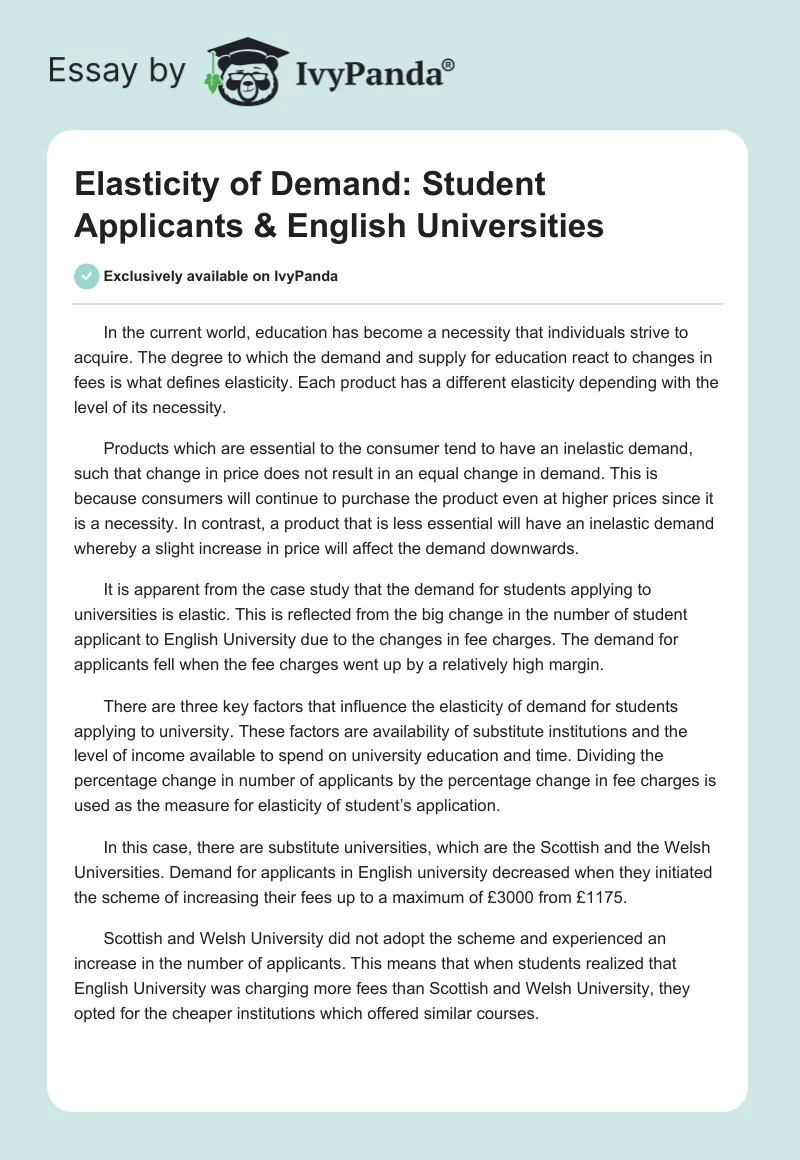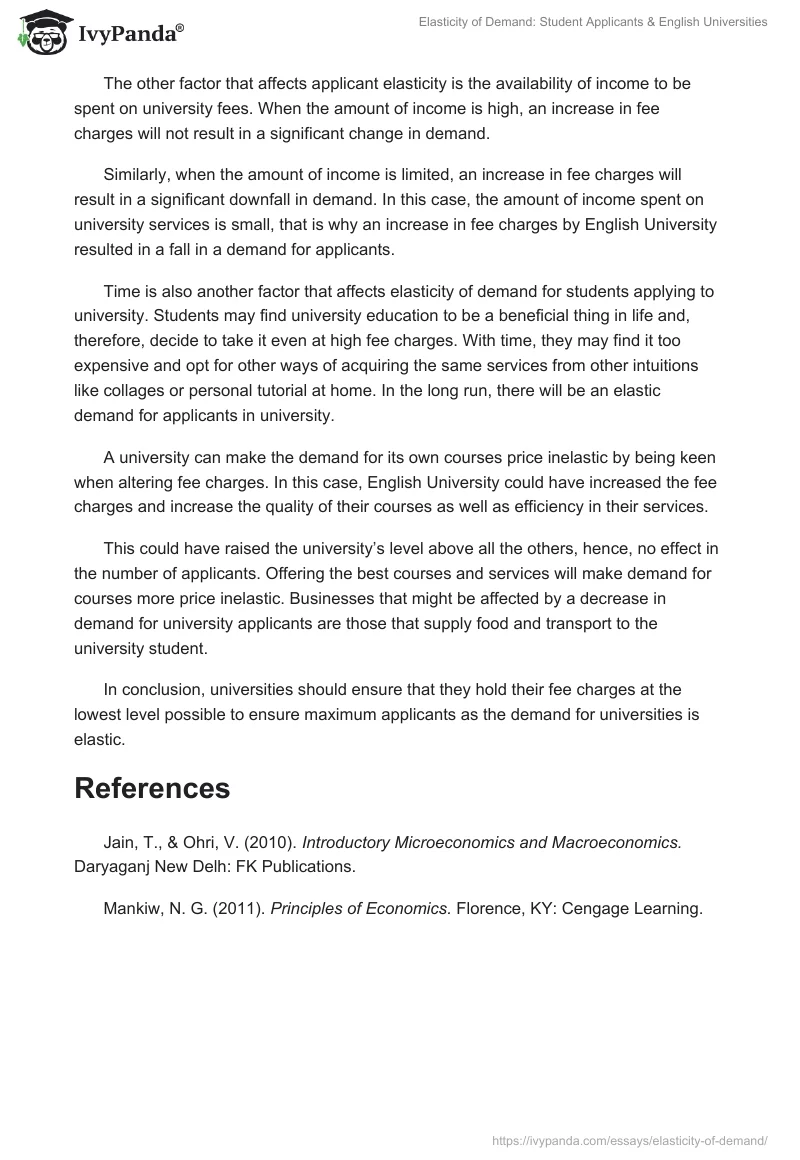In the current world, education has become a necessity that individuals strive to acquire. The degree to which the demand and supply for education react to changes in fees is what defines elasticity. Each product has a different elasticity depending with the level of its necessity.
Products which are essential to the consumer tend to have an inelastic demand, such that change in price does not result in an equal change in demand. This is because consumers will continue to purchase the product even at higher prices since it is a necessity. In contrast, a product that is less essential will have an inelastic demand whereby a slight increase in price will affect the demand downwards.
It is apparent from the case study that the demand for students applying to universities is elastic. This is reflected from the big change in the number of student applicant to English University due to the changes in fee charges. The demand for applicants fell when the fee charges went up by a relatively high margin.
There are three key factors that influence the elasticity of demand for students applying to university. These factors are availability of substitute institutions and the level of income available to spend on university education and time. Dividing the percentage change in number of applicants by the percentage change in fee charges is used as the measure for elasticity of student’s application.
In this case, there are substitute universities, which are the Scottish and the Welsh Universities. Demand for applicants in English university decreased when they initiated the scheme of increasing their fees up to a maximum of £3000 from £1175.
Scottish and Welsh University did not adopt the scheme and experienced an increase in the number of applicants. This means that when students realized that English University was charging more fees than Scottish and Welsh University, they opted for the cheaper institutions which offered similar courses.
The other factor that affects applicant elasticity is the availability of income to be spent on university fees. When the amount of income is high, an increase in fee charges will not result in a significant change in demand.
Similarly, when the amount of income is limited, an increase in fee charges will result in a significant downfall in demand. In this case, the amount of income spent on university services is small, that is why an increase in fee charges by English University resulted in a fall in a demand for applicants.
Time is also another factor that affects elasticity of demand for students applying to university. Students may find university education to be a beneficial thing in life and, therefore, decide to take it even at high fee charges. With time, they may find it too expensive and opt for other ways of acquiring the same services from other intuitions like collages or personal tutorial at home. In the long run, there will be an elastic demand for applicants in university.
A university can make the demand for its own courses price inelastic by being keen when altering fee charges. In this case, English University could have increased the fee charges and increase the quality of their courses as well as efficiency in their services.
This could have raised the university’s level above all the others, hence, no effect in the number of applicants. Offering the best courses and services will make demand for courses more price inelastic. Businesses that might be affected by a decrease in demand for university applicants are those that supply food and transport to the university student.
In conclusion, universities should ensure that they hold their fee charges at the lowest level possible to ensure maximum applicants as the demand for universities is elastic.
References
Jain, T., & Ohri, V. (2010). Introductory Microeconomics and Macroeconomics. Daryaganj New Delh: FK Publications.
Mankiw, N. G. (2011). Principles of Economics. Florence, KY: Cengage Learning.


